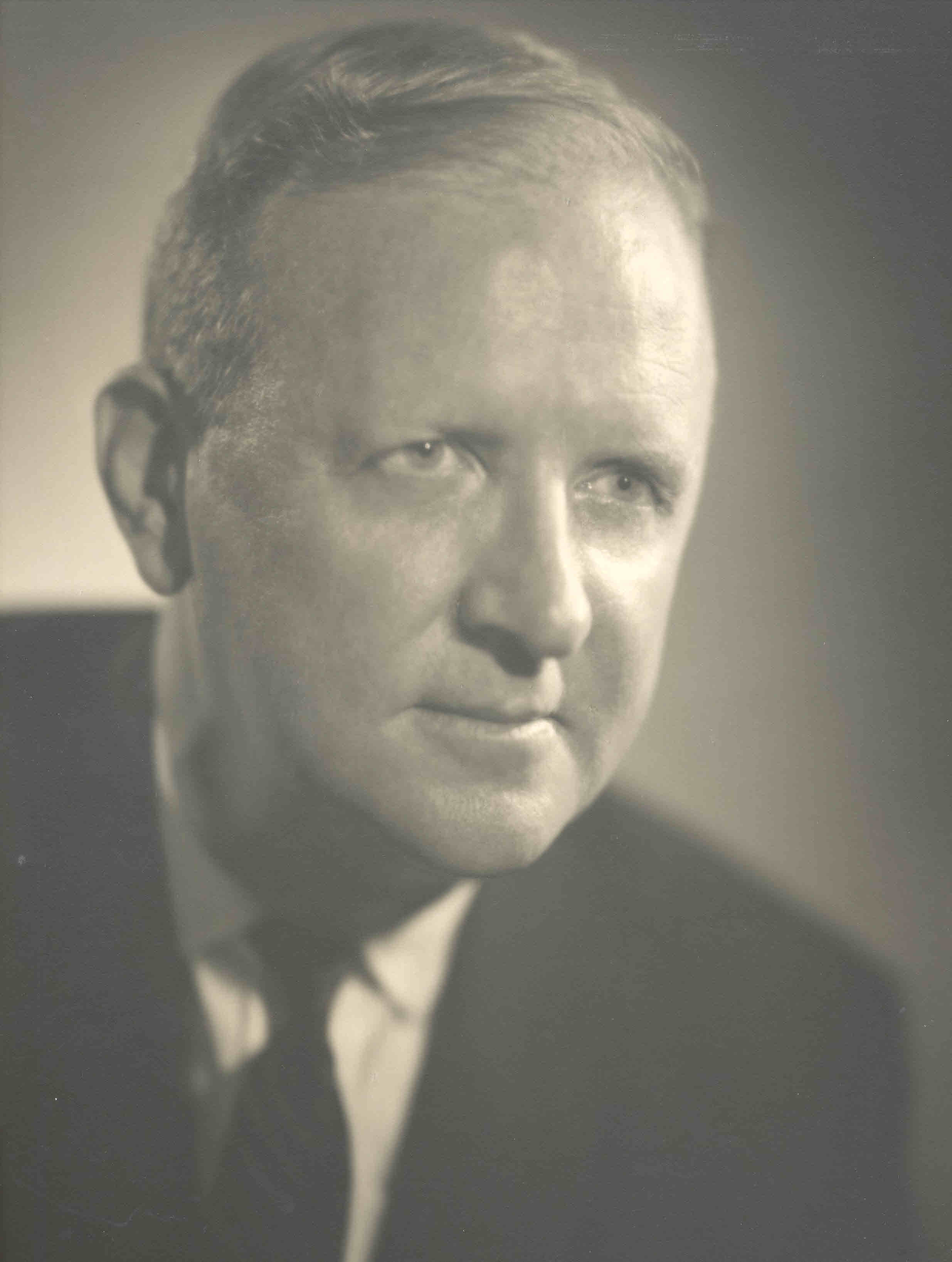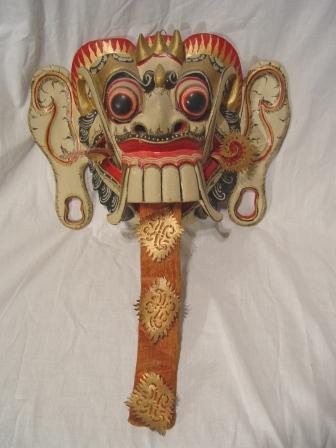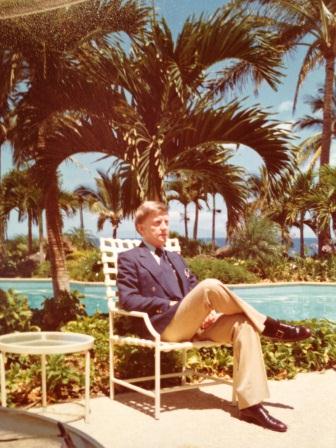Mr. Neal Prince,
R.A., A.S.I.D
(Curriculum Vitae) |
|
|
|
Index Holdings Relating to the 1940's |
|
Index Holdings Relating to the 1950's |
|
Index Holdings Relating to the 1960's |
|
Index Holdings Relating to the 1970's |
|
Index Holdings Relating to the 1980's |
|
Index Holdings Relating to the 1990's |
Professional
Biography
2000's |
|
Mr.
Neal Prince Resource Image Data Base |
|
|
InterContinental
Hotels
Historical
Background
|
John B. Gates,
Chairman of the Board |
Robert Huyot,
Chairman of the Board |
Hans Sternick,
Chairman of the Board |
John P. Sutherland,
President
Latin American
Division |
Mario Di Genova,
President
Europe/Africa Divsions |
R. Kane Rufe,
Sr.
Vice President
Far East/Pacific Division |
John C. Carrodus
Sr.
Vice President
of Services |
Neal A. Prince
Vice
President
Graphics and Interior Designs |
|
|
|
Departmental Staff and Contractual
Designers: |
Kenneth Smith,
ASID |
Charles R Alvey,
Graphic
Designer |
Richard Simpson,
Graphic
Designer |
|
Bill Embery |
Dale & Pat Keller,
ASID |
Joe Grusczak,
ASID |
Trisha Wilson,
ASID |
James Ray Baker,
ASID |
Irene D'Alessio,
Interior Designer |
|
|
Arie deZanger,
IHC Photographer
|
|
 |
|
|
|
|
|
|
|
|
|
|
|
|
|
|
CONTACT
US |
|
|
 |

InterContinental Hotel was a subsidiary of
Pan Am Airlines
 |
|
* * * Webpage is being updated
* * *
|
Who
is Mr. Neal Prince? Mr. Prince is a trained
Architect from Rice University, an Art Historian,
Art Collector and a person with a vast passion for
Motion Pictures and Theatre History, especially
Set Designs. These elements came together to build
a foundation to Mr. Prince's skills, which later
became recognized as his ability for designing
Hotel and Restaurant Interiors. Mr. Prince
incorporated his own passions of above, into an
International branding philosophy that remains as
strong today as it was when he developed his
philosophy of Hotel and Restaurant Designs, which
is visible today, in Hotels worldwide. But what
makes Mr. Prince different? He was a pioneer
within this Industry, along with Dale and Pat
Keller, of Hong Kong, in designing Hotels in
countries that never had an International Hotel
presence. Mr. Prince, along with Kenneth Smith
(Interior Designer), Charles Alvey (Graphic
Designer), Richard Simpson (Graphic Designer),
William Embury (Interior Designer), Joe Grusczak
(Interior Designer), James Ray Baker (Interior
Designer) and Irene D'Alessio (Interior Designer)
and many others were the first, to sent the
standards for International Hotel Interiors. And
what is incredible is that he did not have the
grand budgets that most designers have today. Mr.
Prince used local talents and products, when
available and appropriate, to augment his designs,
which, in return, allowed local Artist, Gallery
Owners, Merchants and vendors to view
InterContinental not as an invader, but as a
partner in creating new sources of commence within
the local economy. What is even more unique in Mr.
Prince being different, was that Mr. Prince has
always credited his success, not in the terms of
"I", but "WE". Mr. Prince, being from Corsicana,
Texas, has always remained modest and respectful
and always have contributed his success due to the
fact that designing hotels is a "TEAM" effort,
from his Departmental Staff to his Professional
Associate Designers that he had brought on to do a
certain project for the vast inventory of
InterContinental Hotel holdings. This website is
to bring together the collections, resources,
stories and images documenting a period of time,
before computers, mobile phones, fax's or video
conferencing. This website is to recapture the
time when International Hotel Design Industry
remained in its infancy before the growth and
development into what we have today as multi
billion dollar companies. Each Hotel on this
website will encompass how Mr. Prince and his
Staff and Professional Associates overcame the
troubles of designing Hotels, from a historic
point of view, to what was necessary to open the
Hotels, maintain the Hotels, and what lessons were
learned to be applied for the next project.
-webmaster
|
|
Hotel:
Bali Beach InterContinental Hotel



Rendering
designed by Dong Kingman, Artist (1966)
Architect:
Lead Interior Designer:

Neal A. Prince, R.A., A.S.I.D, Lead Designer
V.P. of Graphic and Interior Design Department,
InterContinental Hotel Group 1960-1985


Lobby -

Photograph courtesy of Arie de Zanger, IHC
Photographer
Location:
Sanur, Bali, Indonesia
Rooms:
605 completely air-conditioned hotel
guestrooms, with 41 cottages for a more native
experience within the resort.
- No Photograph is available at this
time-
How does Mr. Prince's identify an outstanding
Hotel?
Response: When you arrive at the Hotel,
telephone room service and order a club
sandwich to be delivered to your room. Once the
room service had delivered your requested club
sandwich, take a moment to access how it was
prepared, what materials they used to create
your club sandwich and then taste the sandwich.
Mr. Prince firmly believes, from 55 years of
travelling around the world that if a Hotel is
able to prepare the "simple" club sandwich
correctly, then that Hotel is being operated
correctly.
Restaurants/Lounges:
4 specialty restaurants, an informal
restaurant, 2 cocktail lounge, 2 bars, snack
bar and a poolside snack bar for the Hotel
Guest enjoyment.

Meeting Facilities:
2 function rooms to
accommodating up to 900 people.
- No
Photograph is available at this time-
Examples of Samples for Guestroom
or Lobby Decor Artifacts:
Tiger -


Balinese Masks
Balinese masks are of
ancient origin and act like lightning rods in
the sense that they attract the spirit of the
person to be portrayed. They are sacred.
The Balinese believe that living masks can
provide inspiration for the wearer, whether a
dancer or an actor. The plot of the play or
dance comes from the mask. In other words, as
the Balinese say, the mask "speaks".
Masks are used in dance and drama performances
and are treated with a great deal of respect.
They represent the faces of gods, heroes
and revered persons. Masks are put on the head,
the most sacred part of the body, and never on
the ground.

Masks take many forms. They are usually carved
from a softwood called "pule". Endless sanding
and at least 40 coats of paint achieve a
striking surface.
They are usually kept
out of sight, wrapped inside a box, which is
often covered with a white cloth.

Bali wooden Buddha hand, hand crafted out of
teak wood.

Bali Native wood craving, of a wooden native
snake, hand crafted out of teak wood and hand
painted.

Bali hand crafted from Teak wood, of four pigs
laying next to each other.

Bali hand crafted from Teak wood, of a native
fish.

Bali Teak wood sculpture of a man crouched,
mounted to a base and presented to Mr.
Prince as an Award of Outstanding Service,
provided to the Asian/Pacific Division of
InterContinental Hotels.

CUPS; Eight (8) Chinese
carved nut-wood rice wines cups with silver
linings (each approx. 1-1/2” high by 2-1/2”
high by 2-1/2” diameter
Comments:

Mr. Neal Prince, R.A., A.S.I.D (1966)
Mr. Neal Prince, overlooking the pool
area after directing the natives to assisting
him by having them crawl up the Palm Trees to
remove the coconuts as they dropping upon the
unknown Hotel Guests, in a violent manner, as
they sun bathed. This would be a example
of Mr. Prince's ability to see every project,
from all points of view. Even when its relates
to issues from the top of the trees.
Images held by the Collection:
|
|
|

|
Image provided by the Neal Prince Estate Holding Trust, NAPT |
|
Rendering of the
Bali Beach Hotel, by Dong Kingman.
|
|
|
|
Artist: Dong
Kingman (1911-2000), American
Title: "InterContinental
Bali Beach Hotel, in Sanur,
Bali,
Indonesia" (Commissioned Rendering, Commercial, Hotel opened in 1966)
Date: ca.
1964/1965
Medium: Water
Color
Materials: Paper
Markings: Signed,
lower right corner “D. Kingman”
Framed: Yes,
item has remained in the original frame when presented to the Board of Directors of InterContinental¹ of how the new exterior
would view of the Hotel after the completion, as rendered by Mr. Kingman.
Provence: -Neal Prince Estate Holding Trust
-Neal Prince
Footnote¹: Once
the presentation was completed, it was custom at the time to discard the renderings once the Hotel was completed. Mr. Prince
retained this rendering from destruction by acquiring this original artwork for his own archives.
Institutions Holdings:
See
review the Official Website of Dong Kingman for the vast list of Institutions that hold or have exhibited his massive works
of art. That link would be
www.dongkingman.org
Dong Kingman (1911-2000), American
Mr., Kingman
was born in
Oakland,
California. His father was a Chinese immigrant who worked as a laundryman and dry goods merchant.
The family returned to
Hong Kong when the artist was a child. There he studied traditional painting and calligraphy, as well as European
styles, and worked briefly in an architectural drafting office and with a motion picture company. His early ambition was to
direct films. He returned to
United
States during the Depression and
supported his painting by working in his brother's factory and as a houseboy for a
San Francisco family. After
a successful first show of watercolors in 1933 he joined the Works Progress Administration for five years while
also teaching at the
Academy of
Advertising Arts in
San Francisco. In 1940, the Metropolitan Museum of Art bought one of Mr., Kingman's paintings, and
later two more. His
New York solo debut was at Midtown Gallery in 1942. In the same year he was awarded the first
of two Guggenheim Fellowships. After serving in the Army during World War II, he moved to
New York,
where he taught at
Columbia
University and
Hunter
College, and at the
Famous
Artist School
in
Westport,
Conn. Mr. Kingman also showed with Wildenstein and Hammer Galleries in New York,
but magazines and films expanded his audience. He did many illustrations, including covers for Time, Life and Saturday Review
of when he was introduced to Mr. Neal Prince and Herbert Waide Hemphill, Jr. His urban scenes have a cheered in 1954
while on a cultural exchange program sponsored by the State Department. The scroll was published in Life. He also painted
mood-setting scenes for films like "Flower Drum Song"-1961 and "55 Days at
Peking"-1963, and was technical and promotional
adviser for "The World of Suzie Wong"-1960. The paintings appeared in the films or were records of production. In a 1997
book on Mr. Kingman is peppered with photographs of the artist posing beside
Hollywood celebrities. In 1964, Mr. Prince
contacted Mr. Kingman in a water color rendering of one of their newly Hotels in Bali, Indonesia. Mr. Kingman accepted
the Commercial work which became a great success with the Board of Directors of InterContinental Hotel. Once the
presentation was completed, it was custom at the time to discard the renderings once the Hotel was completed. Mr. Prince retained
this rendering from destruction by acquiring this original artwork for his own archives. This item has been held by Mr. Prince
since that time. In 1981, The Ministry of Culture of the People's Republic of China
arranged a show of his paintings in
Beijing. The Taipei Fine Arts Museum in
Taiwan organized
"40 Years of Watercolors by Dong Kingman" in 1994; in 1999 a retrospective was organized by the
Taichung provincial
Museum in
Taiwan. Another retrospective was schedule to tour in the
United States from 2000-2001. In 2000, the
Academy of
Motion Picture
Arts and Sciences organized an exhibition of
his film-related work. Paintings by Mr. Kingman are owned by the
Metropolitan
Museum,
the
Museum of
Modern Art in
New York, the Whitney Museum of American Art, The Brooklyn Museum of Art and the Museum of
Fine Arts,
Boston, and are in Private Collections, such as Mr. Prince's Estate Trust.
|
|
|
|
STATEMENT
OF
InterContinental HOTEL
INTERIOR
AND
GRAPHIC DESIGN
POLICY
BY
NEAL PRINCE,
ca. 1961
The approach to hotel design differs greatly
from interior design for an individual. The
latter is dictated by the aesthetic
environmental pleasures of one particular
person or family, whereas hotel design is a
coordinated effort between the functional
requirements if IHC Hotel Management and
Operations, the architectural concept and space
allocation, the desires of the local hotel
company, the limitations of restrictive
budgets, and the harmony and market of the
country in which a hotel is located – all
combined to produce a profit marking plant
reflecting the current international tastes of
a widely diversified market.
Although standardization would appear to be
desirable in a rapidly growing industry,
experience indicates the most successful
efforts are based on individuality related to
the country of origin rather than
standardization of design, but with an
overlying emphasis of international
standardization of quality and service.
Each hotel in each location produces its own
surveyed, conceptual, and operational
requirements of IHC, its own local interior
designers, and its own problems of local
availability and manufacturing; however, the
following outline of goals is generally
applicable:
A. To produce good design based primarily on
the functional needs and requirements of IHC
Operations in order that Management can
merchandise fully the facilities provided and
develop a high quality of service; this design
to be approached simultaneously along the
following avenues:
1. Concept (objectivity) – initiated by IHC
Operations and local Hotel Company (where
applicable).
2. Function (utility) – based on past
experience and current consumption of practical
innovation.
3. Construction (fabrication) – utilization of
local market facilities and methods wherever
possible.
4. Budget (feasibility) – dictated by market
surveys indicating the initial expenditure
warranted by projected profits.
5. Beauty (design) – a conglomerate result of
the thinking and ideas of all parties involved
coordinated into a smooth, compatible result.
B. To insure that the original design concept
and subsequent development of each project is
based not on the likes and dislikes of any one
faction but expresses the taste and insures the
comfort of the international guest; and also
utilizes, wherever possible, the trades,
manufactures and craftsmen as well as the arts
and crafts, ornamentation, styles, and
traditions indigenous to the country in which a
project is located.
DISCLAIMER: A considerable effort has
been made in good faith to ensure that
all information accessible from this
site of Archives and memoirs are
accurate. Despite this effort, it is
clear that errors are inevitable.
Consequently no guarantees are expressed
or implied as to the accuracy,
timeliness, currency or completeness of
any information authored by persons at
or agents of the Neal Adair Prince Trust
or its Estate Trust Holding affiliates,
or accessible using links from this
site. Nor is any warranty made that the
information obtained from this
Educational Archival site or that of an
affiliate is valuable or useful for any
purpose. A reader assumes full
responsibility for any actions taken
based on information obtained from this
Educational Archival Interior Designer's
web site. In particular, we emphasize
that the information available through
this site should not be interpreted as
professional International Interior
Designer advice. All information from
these archives, from this or any other
source, needs carefully to be reviewed
with your own trusted License Interior
Designer provider before being
acted upon in any way.
|
|
|
|
 |

